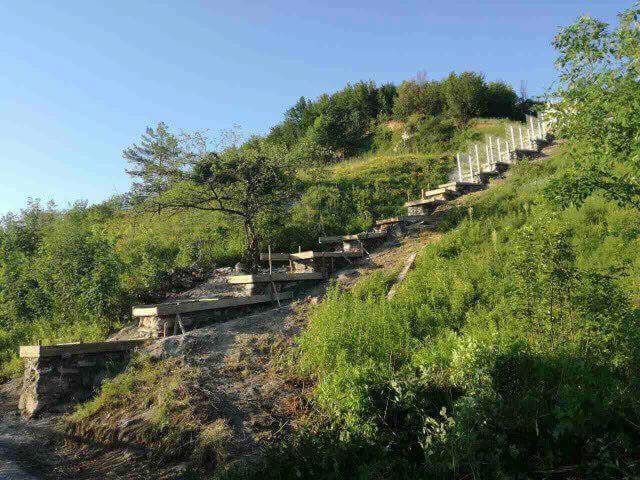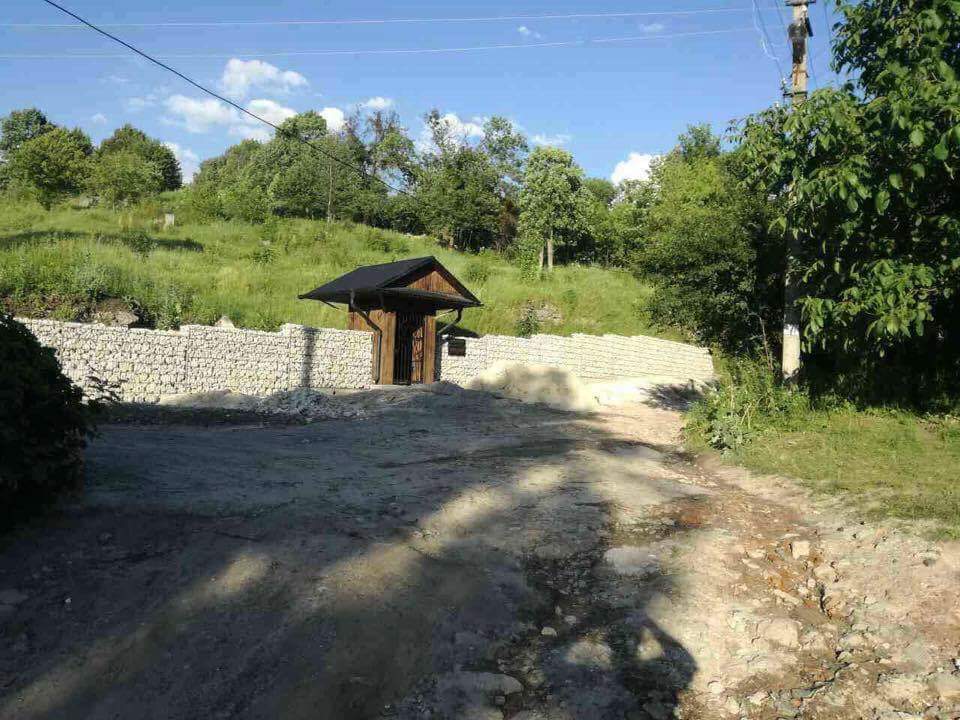Alternate names: Кременець [Ukr], Kremenets and Кременец [Rus], Krzemieniec [Pol], Kremenitz and קרעמעניץ [Yid], Kremenez [Ger], Kremenits, Kremenec', Kshemyenyets. 50°06' N, 25°43' E, 38 miles N of Ternopil, 48 miles SSE of Lutsk (Łuck). 1900 Jewish population: 6,539.
Yizkor. [July 2012]
- Pinkas Kremenits; sefer zikaron
(Tel Aviv, 1954) - Kremenits, Vishgorodek un Pitshayev; yisker-bukh
(Buenos Aires, 1965) - Kol Yotzei Kremenitz Be-Yisrael Ve-batfutsut
(Tel Aviv, May 1974) - Kremenets Sefer Zikaron
(Tel Aviv, 1966 -
- Voice of Kremenets Emigrants in Israel and the Diaspora - Booklet 2
- JOWBR: burial records
- Kremenets, Ukraine (Voice of Kremenets Emigrants in Israel and the Diaspora, 1995)
- Pinkas HaKehilot, Poland, Vol. 5 (1990), p. 179-186: "Krzemieniec"
- Shtetl Finder (1980), p. 43: "Kremenitz".
- JewishGen Ukraine SIG
- ShtetLink [February 2001]
until 1503 although a Polish yeshiva operated in Kremenets during the 15th and 16th centuries. Kremenets became a secondary center of
Haskalah (enlightenment) in Eastern Europe from 1772 through 1781. By the end of the 19th century, Jews were active primarily in the paper industry and as cobblers and carpenters. Isaac Stern, violin virtuoso, lived here. [February 2011]
KREMENETS I: US Commission No. UA19030101 Alternate names: Kremets (Yiddish), Kremenits (German), Kremenitz (Hungarian), Kremieniec (Slov), Krzemieniec (Polish) and Kshemyenyets (Ukraine). Kremenets is located in Ternopolskaya at 50º6 25º43, 180 km from Lutsk and 69 km from Rovno. The cemetery is located at Dzherelnaya Street. 17. Present town population is 5,001-25,000 with fewer than 10 Jews. Kombinat Komunal'nyh Predpriyatiy - Director Kovalenko Vladimir Ivanovich [Phone: (03546) 22756]. [Phone: (03546) 22105]. 1680 Khmelnitsky Pogroms. The last known Karlin-Stolin Hasidic burial was 1960. No other towns or villages used this unlandmarked cemetery. The urban hillside and crown of a hill, separate but near other cemeteries, has no sign or marker. Reached by crossing public construction materials factory and Dzherelnaya Street, access is open to all. A broken masonry wall with no gate surrounds site. 501 to 5000 common tombstones, most in original location with less than 25% of surviving stones toppled or broken, date from 1604 to 20th century. The cemetery contains no known mass graves. The municipality owns the site used for Jewish cemetery only. Adjacent properties are commercial-industrial and residential. The cemetery boundaries are unchanged since 1939. Rarely, Jews or non-Jews visit. This cemetery has not been vandalized. There is no maintenance. Within the limits of the cemetery is an ohel. Vegetation overgrowth is a seasonal problem, preventing access and disturbing graves and stones. Moderate threat: uncontrolled access, weather erosion and vegetation. Slight threat: pollution and vandalism. Kirzhner Moisey Davidovich of 263005 Lutsk, Grushevskogo Street 18, Apt. 38 [Phone: (03322) 34775] visited site and completed survey on 7/4/95. Interviewed was Ostashevskaya Mariya Yozefovna of 283280, Kremenetz, Letchikov Osvoboditeley St. 43 [Phone: apt.15] on 7/5/95. Documentation: Shmuel Spector The Holocaust of Vohlynian Jews 1941-1945.; Yad Vashem. Jerusalem: The Federation of Vohlynian Jews, 1990. p.13-15, 23, 47, 54, 62, 63, 66, 68-70, 73, 129, 134, 135, 192, 212, 220-223, 238, 242, 252, 316, 320, 358, 35_. Other documentation exists but was inaccessible. The unlandmarked 1942 mass grave is near the hospital in "Letchikov Osvoboditelyey" district. No Jews from other towns or villages were murdered here. The isolated urban flat land has signs or plaques in local language and in Hebrew mentioning Jews and the Holocaust. Reached by crossing public sugar factory, access is open to all. No wall, fence, or gate surrounds the mass grave. 1 to 20 common tombstones, all in original location with none toppled or broken and no stones removed, date from 1992. The site contains marked mass graves. The municipality owns the property. Adjacent properties are residential. Local residents visit rarely. The mass grave not was vandalized in the last ten years. Local/municipal authorities erected stones in 1992. Now, occasionally, individuals clean or clear. Within the limits of the mass grave are no structures. Moderate threat: uncontrolled access. Slight threat: pollution and vandalism. on 7/5/95. Interviewed on 7/5/92was Ostashevskaya Mariya Yozefovna of 283280, Kremenets, Letchikov Osvoboditeley Street 49, [Phone: apt.15]. Documentation: Shmuel Spector. The Holocaust of Volynian Jews 1941-1945; Yad Vashem. Jerusalem: The Federation of Volynian Jews, 1992, p.13-15, 23, 47, 54, 62-63, 66, 68-73, 129-135, 192, 212, 220-223, 238, 242, 2 52, 316, 320, 358-359. Other documentation exists but was inaccessible.
-- Town officials: Town Soviet of Kremenets 283280, Shevchenko Street 67 [Phone: (03546) 22739] Kopteva G.P.- [Phone: (03646) 22727].
-- Regional: Regional Monument Preservation Society [Phone: (03546) 23636] Region Soviet in Ternopol - Chairman Kosenko Boris
-- Jewish Community in Ternopol, Gotlib Kalman of 282022, Ternopol, Dovzhenko Street 11, apt 75.
The earliest known Jewish community was 16th century. 1939 Jewish population (census) was 6619. Effecting Jewish Community was
KREMENETS II: US Commission No. UA19030501
Kirzhner Moisey Davidovich of 263005 Lutsk, Grushevskogo Street 18, Apt. 38 [Phone: (03322) 34775] visited site and completed survey


